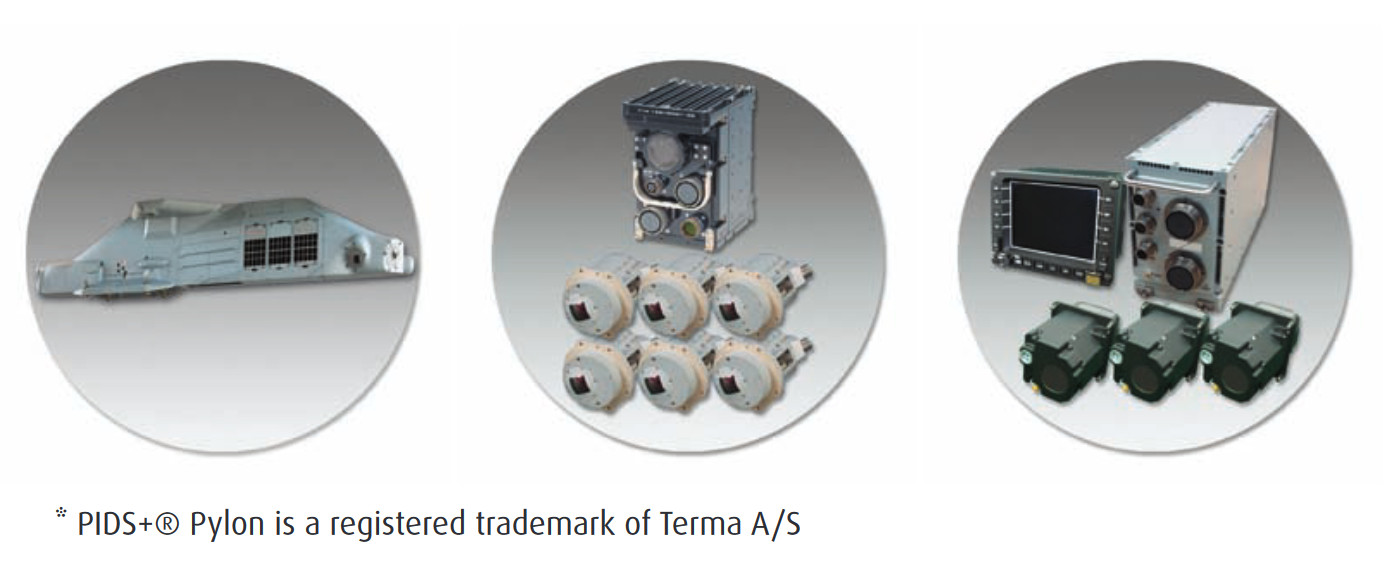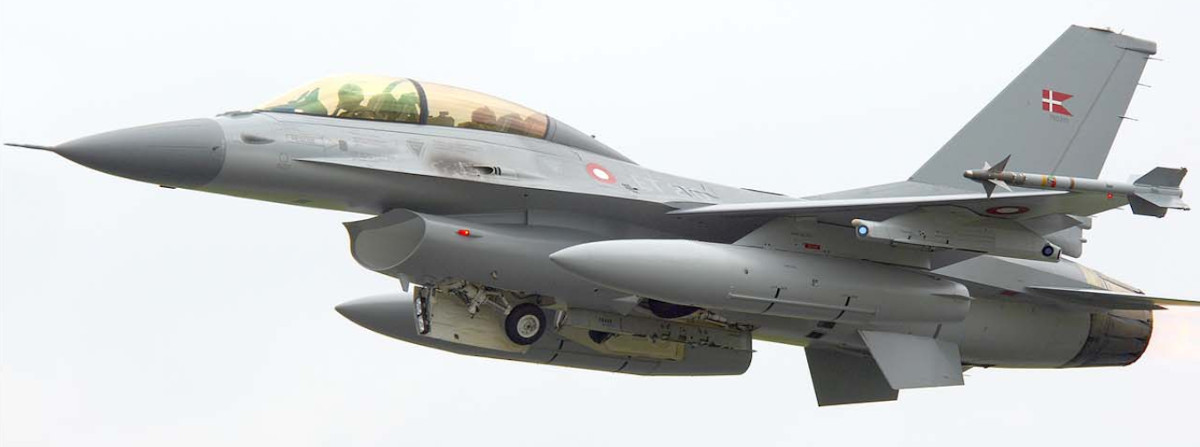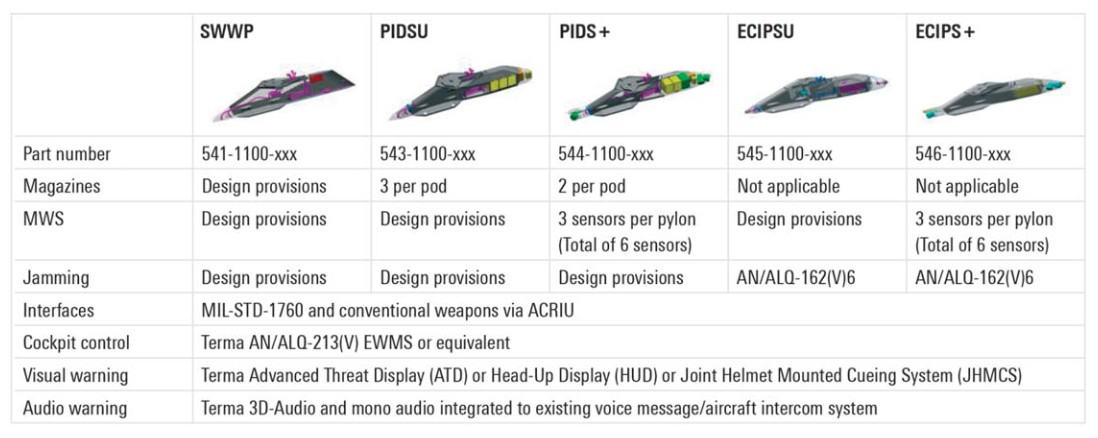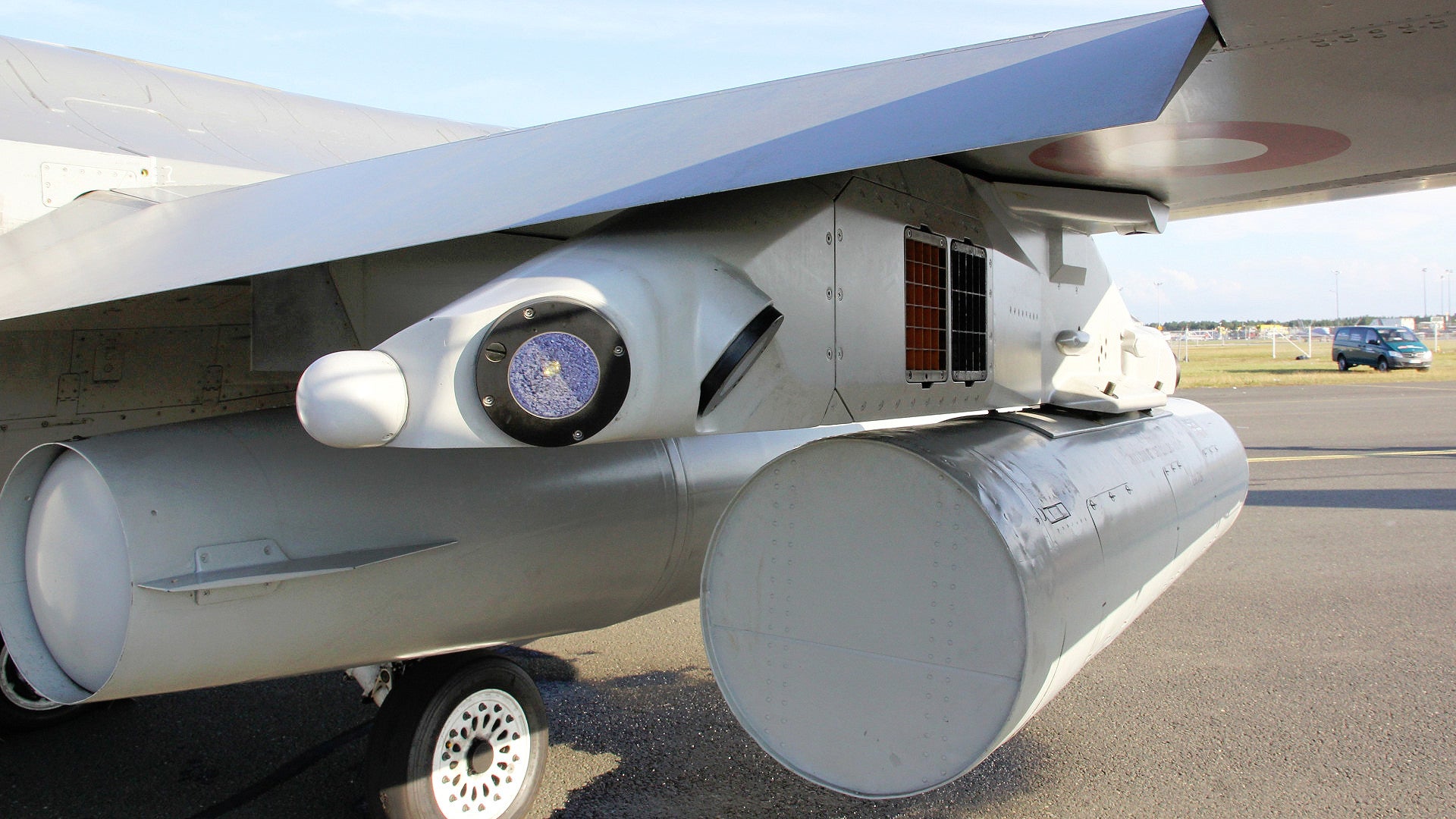The U.S. Air Force is buying new Israeli-made infrared missile warning systems for Air Force Reserve and Air National Guard F-16 Viper fighter jets. The aircraft will carry these infrared warning sensors on specialized underwing pylons that are also capable of accomodating decoy flare and chaff dispensers and electronic warfare jammers.
Israel-headquartered defense contractor Elbit announced that its American subsidiary, Elbit Systems of America, had received the contract for “pylon-based infrared missile warning systems” on Mar. 9, 2020. The Air Force has already set aside a little more than $17 million to buy these systems, but the complete contract, which covers work through at least February 2030, could be worth up to just over $471.6 million, according to an official Pentagon contracting announcement on Mar. 5.
Neither the Air Force nor Elbit identified the specific warning system in question, but the Israeli company does offer a number of different suites as part of its Passive Airborne Warning System (PAWS) product line. In addition, Elbit says that PAWS-2 specifically can work with on unspecified pylon mount from Danish defense contractor Terma, according to Aviation Week.

In January 2020, Terma separately announced that it had received a contract worth approximately $84 million to supply examples of its Pylon Integrated Dispensing System Universal (PIDSU) to the Air Force for use on Air Force Reserve and Air National Guard F-16s. The Danish company offers PIDSU as a shell into which a customer can integrate its own choice of missile warning systems, flare and chaff dispensers, and electronic warfare jammers. Each PIDSU pylon can accommodate up to three flare and chaff dispenser buckets, while the exact configuration of the other systems is dependent on their respective designs. The pylons can still carry munitions and other stores, as well.
Terma has already supplied Pylon Integrated Dispensing System Plus (PIDS+) and Electronic Combat Integrated Pylon System Plus (ECIPS+) pylons to the Belgian, Danish, Dutch, and Norwegian Air Forces for installation on their various F-16 variants. Terma has also built similar integrated self-defense systems for the Panavia Tornado combat jet in the past.



Each PIDS+ pylon can only accept a maximum of two flare and chaff dispensers. They also feature variants of the AN/AAR-60 Missile Warning System, which has three separate warning sensors on each pylon.
The ECIPS pylons carry the three AN/AAR-60 sensors, but do not have the flare and chaff dispensers. Instead, they also have an AN/ALQ-162(V)6 high-band radio frequency countermeasures system from Northrop Grumman installed.
Typically, a Viper would carry one PIDS+ and one ECIPS+ to provide a mix of countermeasures capabilities. An aircraft with one of each would be carrying a complete array of six AN/AAR-60 warning sensors, an AN/ALQ-162(V)6 jammer, and three dispensers for expandable flares or chaff cartridges, just in those pylons.
Both types of pylons are also designed work with the AN/ALQ-213 Electronic Warfare Management System, another Terma product, found on various types of F-16 Vipers. The Danish company also offers systems to provide alerts to incoming threats. This includes options for visual alerts through a fixed display in the cockpit or the feed in the helmet-mounted Joint Helmet Mounted Cueing System (JHMCS), as well as various types of audio warnings, including through the Danish company’s own 3D in-cockpit surround-sound system.
“The threat scenario, especially when operating from deployed bases, is shifting towards increased IR threats – not least MANPADs,” Terma’s press release for its contract with the Air Force says, using the acronym for shoulder-fired man-portable air defense systems. Longer-range infrared homing surface-to-air missiles are becoming an increasing threat, even from non-state actors, as well.
Elbit’s PAWS family and other similar passive infrared missile warning systems can also detect air-to-air missile launches and can spot air- or ground-launched non-heat-seeking missiles, as well. Combined with chaff or an electronic warfare system, the PIDSU pylons ould provide valuable added layers of defense for Air Force Reserve and Air National Guard F-16s.
These types of missile warning systems, tied to other countermeasures suites, are becoming increasingly standard on advanced fourth-generation combat jets. Saudi Arabia’s latest F-15SA Eagles notably feature a missile warning suite with infrared sensors pointing in every direction for spherical coverage. All of the variants of the F-35 Joint Strike Fighter also have this capability as part of their AN/AAQ-37 Distributed Aperture System (DAS).
While the Air Force is planning to replace significant numbers of its F-16s with F-35s over time, it still expects to fly hundreds of Vipers for decades to come, especially in the Air Force Reserve and Air National Guard. So, it’s not surprising that the service is looking for ways to upgrade those jets to ensure they remain relevant for actual higher-end combat operations for the foreseeable future.
In the same vein, the Air National Guard, in particular, was the first to begin upgrading parts of its F-16 fleet with AN/APG-83 Scalable Agile Beam Radars (SABR). SABR is an active electronically scanned array type that expands those Vipers’ ability to spot and engage threats at longer distances and with greater precision.

The Air National Guard has its own development and procurement streams and has used them to acquire other upgrades for their F-16s over the years, as well. The SABR upgrade is now finding its way onto F-16s assigned to regular Air Force squadrons.
Between the new PIDSU pylons equipped with the Elbit missile warning systems and other countermeasures and the other upgrades, Air National Guard F-16s, and, to a lesser extent examples of those fighters in the Air Force Reserve, could be on track to becoming some of the best protected and most otherwise advanced and capable Vipers in the world.
Contact the author: joe@thedrive.com
